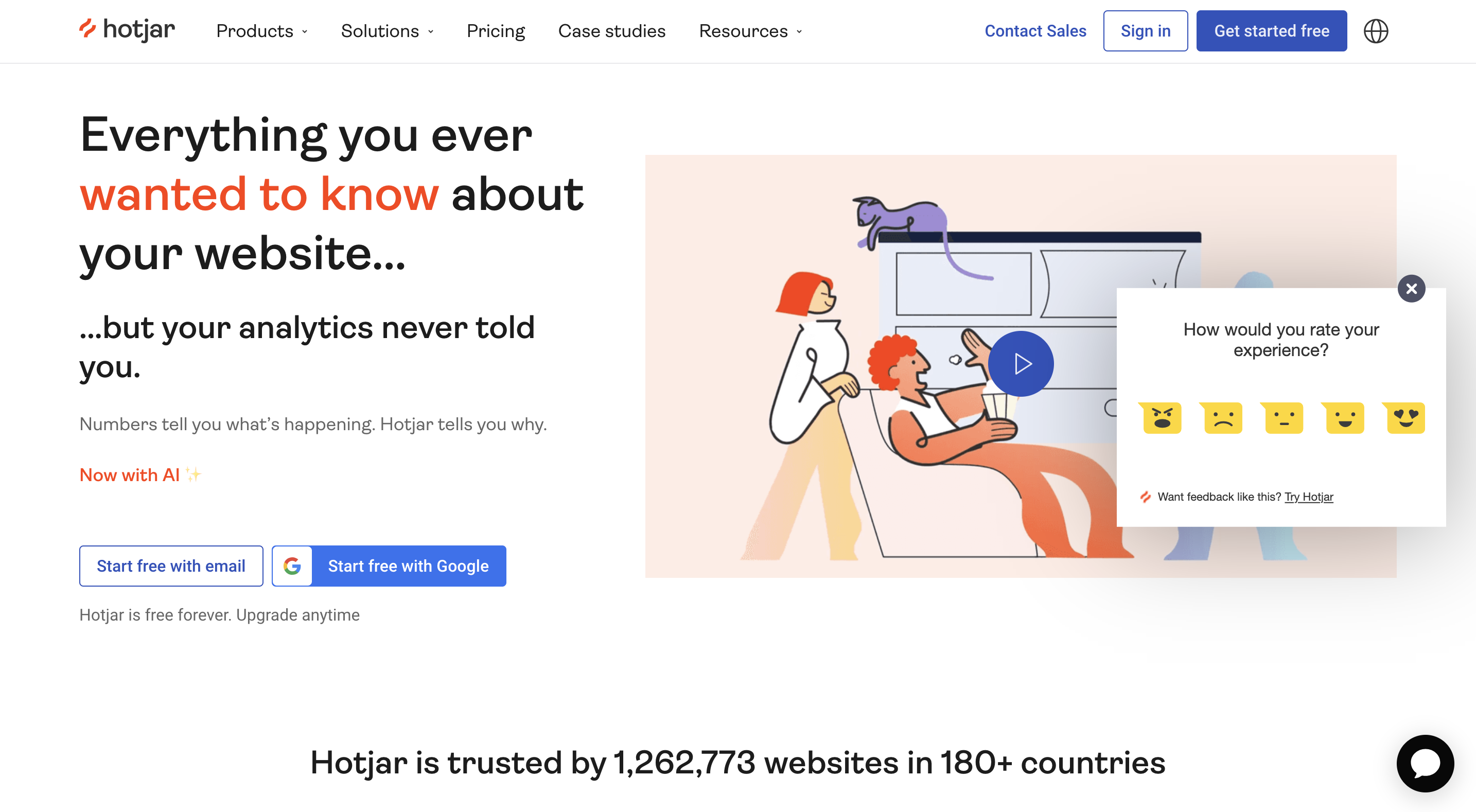Your Guide to Market Research: What It Is, Types, and Methods
Market research is an important part of a business or marketing strategy. Learn more about what it is and the top methods in our market research guide.
You might also like…
Why AI Tools Built by Researchers Make a Difference
Learn more about AI-powered market research tools and why tools build by researchers for researchers are leading the charge. By: Erik Larson Date:...
Customer Survey Best Practices: Unlocking Insights Through Your Customer List
Learn how to leverage customer lists for market research. Explore best practices, address low response rates, and drive actionable insights. Date:...
Introduction
Market research is the backbone of a solid and informed business or marketing strategy. It can help pinpoint the right target audience for your products or services, help you build out a successful go-to-market strategy, and help you grow and build your business.
However, there are many different types of market research and methodologies for gathering data, and it can be difficult to know which is the right one for your needs.
Throughout this article, learn more about what market research is, the top benefits, when you need it, plus the various types and methods for conducting market research.
Let’s get started.
What is Market Research?
Market research is a business strategy relating to the collection of data and gathering of information about a certain consumer group and their pain points, needs, preferences, and other key insights.
There are many different ways to gather this information. Some are much more surface level like polls and surveys while others dig deeper via interviews or observations.

Top 5 Market Research Benefits
There are many benefits that market research can provide your company. Gathering key insights always helps solidify a business and its strategy. But let’s dig deeper into the five main benefits and why they’re so important.
Make Informed Business Decisions
Market research provides companies with the accurate data needed to make fully informed business decisions. Those decisions might circle around launching a new product, starting a new round of funding, hiring a new executive, or something else entirely.
Let’s look at an example. Say you’re running a market survey to gather sentiment about a potential change or feature addition to your product. If the overwhelming response to your survey seems unhappy about or uninterested in this change, you now have direct customer feedback giving you reasons not to move forward.
Understand Your Customers
If you’re still in the beginning stages of finding your target audience, persona building research can help you pinpoint the right customers, build customer personas, and create a customer-centric business strategy that proves you know exactly who your customers are and what they want.
Market research can also help with market segmentation, brand/product positioning, and targeting. It’s essential to know who your target customer is and what they want from businesses like yours so that you’re marketing to them, rather than to the void.
Stand Out in the Market
Market research is also helpful for keeping an eye on the competition so you can ensure your strategy helps propel you in front of them. Conduct competitive analysis research to gauge exactly how your competitors are marketing their products and services so you can do it better.
Identify Opportunities
Another major benefit of market research is that it gives you the ability to identify growth opportunities for your business. Through your surveys, interviews, and other research avenues, you can discover untapped market segments, product improvements, co-partnership opportunities, and more.
Keep Up With Trends
Last, but not least, market research helps you keep up with various trends in your industry. Discover how customer shopping habits change over the years, how different media impact their needs and pain points, and how the cultural landscape changes over the years.
When to Conduct Market Research
Knowing why you should be conducting market research is one thing. Another is knowing exactly when and what kinds of insights you need at various points of building your business.
While there may be endless times and reasons to start doing market research, here are a few specific instances where market research can help your business make the best possible decisions:
- Starting a new business
- Launching a new product or collection
- Creating a marketing strategy
- Improving a product or service
- During pricing discussions
- Tracking brand sentiment
- Gaining a competitive edge
Having actionable insights from your target audience in any of these instances can help you make better decisions and ensure you’re meeting your customer needs every step of the way.
Types of Market Research
There are different types of market research based on the kind of data you’re looking for. Let’s cover the four main market research avenues you can take and what information you would get from each.

Primary Research
Primary research is research you—or a marketing research expert—conducts first-hand. This includes things like surveys, focus groups, interviews, etc. (More on these later.)
With this type of research, you’re going directly to the source to collect data for your own specific needs. You get to dictate the environment, questions asked, audience sample, and anything else relating to the information you’re looking for.
Secondary Research
Secondary research involves curating existing data to help inform a hypothesis. This uses second-hand research like reports, public sources, journals, and other existing sources.
Often, secondary research is done first to gauge the landscape of an industry or the question that your brand may be asking. Then, you can dig deeper through primary research to get an even better understanding of the questions that relate specifically to your company, products, or services.
Qualitative Research
Qualitative research is a type of market research that collects non-numerical data. This includes text, audio, and video information that then needs to be analyzed. Methods for gathering qualitative research include interviews, focus groups, open-ended survey questions, and similar avenues.
This type of market research helps add depth to numerical data and can help brands understand customer opinions and long-form thoughts, rather than typical data and statistics.
Quantitative Research
Quantitative research is the opposite of qualitative research. This market research type refers to numerical data and statistics and other objective data. There’s no room for opinions here—it’s cold, hard facts.
This is the cornerstone of market research, while qualitative helps provide nuance. This type of data is collected through multiple choice survey questions, polls, questionnaires, and review scores.
Market Research Methodologies
We’ve covered the four overarching types of market research—now let’s talk about the different market research methodologies used within those types.
Surveys
Surveys are one of the most basic and most common types of market research. These can be done on an extremely small scale—like this single-question feedback survey on HotJar’s website:
Or they can be done on a much larger scale, creating a multi-question survey that’s submitted to hundreds or thousands of people within your target audience. Some surveys might take just a minute or two while other, more in-depth surveys can take up to 20 or so minutes.
Surveys can also be done in conjunction with other methodologies. For example, we recently worked with a client to conduct an online survey with consumers who are concerned about their privacy when using their internet browser.
Then, we also interviewed 1,300 consumers (more on interviews shortly) aged 18-75 about their online habits and tested a number of concepts designed to protect consumer data. With this conjoint methodology, we were about to develop an ideal bundle of privacy products at an appealing price for our client—based on exactly what their target customer wants.
Surveys can be used for both qualitative and quantitative market research. Multiple choice questions help you gather quantitative data while open-ended questions provide qualitative information from respondents.
You can contact our team to learn more about the surveys and conjoint projects we can put together for you—but basic surveys can also be conducted on your own with easy-to-use market research tools.
Focus Groups
A focus group is a small group of your target audience (typically 8-12 individuals) that watch a demo, test a product, view an advertisement, or something else related to your business or product. The individuals are then questioned about their thoughts regarding the product, ad, etc., that they watched or tested.
This can be a great way to get actionable feedback from your target audience on how they’d use your product, what changes they think it could use, if they like it or not, and more.
One of our clients sells ready-to-use frozen food items in leading grocery stores. Their target audience is people who like to cook from scratch at home. They wanted to discover how their existing product line could be expanded by adding seasonings or combining existing products in order to create highly appealing ingredients that home cooks would want to try.
For this project, we conducted six online video focus groups with female and male consumers who cook at home using fresh ingredients on a regular basis and are the primary grocery shoppers for their homes.
In each group, we had participants describe their cooking processes, flavor and style preferences, and their favorite dishes. Then, we had them elaborate on some of the problems they would face when cooking at home—things like ingredients available to them, space for prepwork and cooking, etc. Participants were also able to view and react to the concepts our client had prepared for the group.
In the end, our client gained valuable input from their target audience and a large number of ideas for new product concepts.
This is why focus groups can be a great source of data and information—it’s a form of qualitative market research that gives brands direct feedback from the people they’re targeting with their products or services.
Interviews
Interviews—typically in-depth interviews, or IDIs—are face-to-face interviews (in person or virtually) conducted with just one individual at a time. This allows for a more conversational approach, along with the ability to read non-verbal cues and body language.
OvationMR was recently approached by a manufacturing company that wanted to create a product related to medical waste. The client was new to the healthcare space, so getting an in-depth understanding of the industry and their needs was paramount.
We recruited a dozen healthcare professionals including physicians, nurses, and healthcare administrators to participate in hour-long, one-on-one Zoom interviews. The interviews included visual stimuli and markup and video highlights from each interview were included in the final report to give the client key findings for how to effectively compete in this new space.
Ethnographic Research
Ethnographic research is a type of observation that takes place in the participant’s natural environment. Researchers are studying participants doing their normal, everyday routines, either to understand how a brand’s target audience lives or to have them test out a product in a real-life scenario.
We recently worked on an ethnographic project with an industrial product company. Our client was looking for insights about how their customers were using their products, specifically with regard to the controls (i.e., remote controls, wall-mounted controllers).
We sent in our researchers to conduct interviews with the users (including day-to-day users, operations management, and production engineers) as well as to observe how the controls were being used by each person.
By the end of the project, we identified a number of pain points plus suggestions for improvement and new features. Our client was then able to develop a next generation controller to fit all of these needs of their specific customers.
Public Sources
Public sources are used for secondary research. These public sources include the existing data that can be used to back up primary research or help provide data for other uses.
OvationMR routinely uses public source data in our work. First, we refer to public sources to augment and extend the primary research we conduct. We’ll often use data from sources like the U.S. Census Bureau and Chamber of Commerce to help our clients develop estimates of product potential based on survey data and applying that to targeted population counts.
We’ll also use public source data to help our clients get a handle on the markets and audiences they’re hoping to address. By gathering publicly available reports/data files and curating them for our clients, we’re saving them time and effort while also sharing our insights on the matter at hand.
Public sources tend to refer mostly to government statistics—like the aforementioned Census Bureau and Chamber of Commerce. There are also commercial sources—sites like Pew, Gartner, Forrester, and Statista—as well as internal sources—your company’s own sales and customer data—that can help inform business decisions.
How to Do Market Research
Ready to start your own market research project? Whether you want to test out the market for a new product, improve an existing product, or find the right price points for your product line, market research can help.
Let’s walk through the six main steps towards successfully completing your first market research project.
Identify Your Goals
What are your goals? Why are you wanting to launch a market research study? Go back to our section on “When to Conduct Market Research” to see if any of those instances apply.
You might have a goal like:
- Selling more products to your target audience
- Improving your products
- Finding ways to create a product upgrade
- Testing a new market for a different type of product
Knowing why you want to conduct a market research study and what you’re hoping to discover is the first step. Otherwise, you might end up with a bunch of random data that you don’t really know what to do with or how to interpret.
Choose Your Research Topic
Once you have the goal(s) for your market research project, it’s time to select one specific topic, focus, or hypothesis. Understanding your overall research topic can guide the type of market research and methodologies needed to gather the best information.
Your research topic might be a single question you need to answer, you might be testing the waters of a new product market or industry, or you might be exploring interests that your target audience has to better market to them.
Find a Market Research Company
Once you know what you know the gist of what you’re looking for, it’s time to start looking into a market research company to partner with. Make sure the firm you choose has experience with your industry as well as the type of research you’re looking for.
Working with a market research company rather than trying a DIY approach can help you find a bigger sample size of people to target, professionally program a survey or conduct qualitative research, and interpret your results in an actionable way so you have tangible next steps.
Pinpoint Your Target Audience
Next, you’ll need to pinpoint your target audience. You might already have a persona built out—but if not, the market research firm you’ve partnered with can help you put this together.
Having a target audience outlined is key for selecting the right online sample of respondents for your survey or for recruiting the best participants for a focus group or interview.
Draft Your Questions
What questions do you want to ask to get the results you’re looking for? Again, this is a step that your market research partner can help with. Even if you know what you want to ask, the experts are able to help rephrase any questions to perfectly acquire the exact type of data you need to answer your main topic or focus.
Start Collecting Data
Your market research company will then program your survey, start recruiting participants or respondents, and launch the project so you can start collecting data. At the end of the allotted project time, you’ll receive a final report with all of the findings tied up with a nice little bow so you can start making decisions based on the information you’ve discovered.
Get Started With Market Research for Your Company
Ready to start learning more key insights about your industry, products, and/or services? Market research can help you discover even more about your target customer and what they want from your brand. It’s always a great day to discover why. Get in touch with one of our representatives to get started.

Want to Start Your Next Market Research Project?
Get start with your next initiative
Follow
OvationMR

Need help with new insights?
We are ready to offer you:




